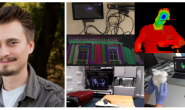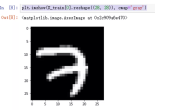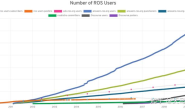文章目录
传感器噪音
本教程将通过添加噪声来改善传感器的输出。几乎每个传感器的输出端都有噪声。例如相机可能具有色差,声纳多径效应以及激光不正确的距离读数。我们必须将噪声添加到模拟生成的数据中,以便更紧密地匹配真实传感器生成的数据类型。 gazebo有一个内置的噪声模型,可以将高斯噪声应用于各种传感器。尽管高斯噪声有时不太现实,但它总比没有好。尽管如此,在很多情况下它可以很好地对噪声值进行近似估计,并且高斯噪声也相对容易应用于数据流。
Step1 可视化传感器数据
让我们从查看当前Velodyne输出开始,然后我们可以添加噪声。 1、打开凉亭,然后插入Velodyne传感器。
- gazebo
- 选择左上方附近的“插入”选项卡。
- 向下滚动并选择Velodyne HDL-32型号。
- 单击左键选定传感器放置位置。
2、在激光束前面添加一个方框,以便获得有用的数据。
- 在渲染窗口上方的工具栏中选择Box图标。
- 单击左键选定箱子放置位置。
 3、我们可以通过Gazebo的主题可视化器仔细查看传感器数据。按Ctrl-t,打开主题选择器。找到
3、我们可以通过Gazebo的主题可视化器仔细查看传感器数据。按Ctrl-t,打开主题选择器。找到/gazebo/default/velodyne/top/sensor/scan主题。
 选择
选择/gazebo/default/velodyne/top/sensor/scan,然后按确定以打开激光可视化仪。我们可以看到激光线条十分平滑。

Step2 添加噪声
gazebo的噪声模型可以使用标签访问。 1、打开Velodyne模型。
gedit ~/.gazebo/models/velodyne_hdl32/model.sdf
2、将<noise>元素添加为<ray>元素的子元素。首先,我们将施加大量噪声,以便可以轻松看到效果。
<sensor type="ray" name="sensor">
<pose>0 0 -0.004645 1.5707 0 0</pose>
<visualize>true</visualize>
<ray>
<noise>
<!-- Use gaussian noise -->
<type>gaussian</type>
<mean>0.0</mean>
<stddev>0.1</stddev>
</noise>
3、重新打开可视化器(Ctrl-t),然后选择 Velodyne laser scan。这是后可以发现输出看起来已经没有刚才那么平滑了,我们可以通过修改mean 和 stddev,来修改噪声幅度。

到目前为止,我们有一个功能齐全的传感器。模型组件已准备就绪,并且已应用了高斯噪声模型。最后要添加的组件是控制传感器的一个自由度的插件。该插件将控制传感器上部的旋转。
一、介绍
1、插件概述
插件是一个由Gazebo在运行时加载的C ++库。插件可以访问Gazebo的API,该API允许插件执行各种各样的任务,包括移动对象,添加/删除对象以及访问传感器数据。
2、安装依赖
在某些操作系统上,必须在构建插件之前安装开发包。
# Ubuntu or Debian
sudo apt install libgazebo8-dev
# Fedora
sudo yum install gazebo-devel
二、编写插件
我们将在新目录中创建插件。该目录的内容将包括插件源代码和CMake构建脚本。
为了使本教程简短,我们不会详细介绍插件的各个组件。查看这些教程以获取更多信息。
ps:后续会补上插件相关教程,如果实在有需要的小伙伴可以去查看官方教程
步骤1:创建工作区
mkdir ~/velodyne_plugin
cd ~/velodyne_plugin
步骤2:创建插件源文件
我们将从一个简单的插件开始,在工作空间中,创建源文件。
gedit velodyne_plugin.cc
文件内写入以下内容:
#ifndef _VELODYNE_PLUGIN_HH_
#define _VELODYNE_PLUGIN_HH_
#include <gazebo/gazebo.hh>
#include <gazebo/physics/physics.hh>
namespace gazebo
{
/// \brief A plugin to control a Velodyne sensor.
class VelodynePlugin : public ModelPlugin
{
/// \brief Constructor
public: VelodynePlugin() {}
/// \brief The load function is called by Gazebo when the plugin is
/// inserted into simulation
/// \param[in] _model A pointer to the model that this plugin is
/// attached to.
/// \param[in] _sdf A pointer to the plugin's SDF element.
public: virtual void Load(physics::ModelPtr _model, sdf::ElementPtr _sdf)
{
// Just output a message for now
std::cerr << "\nThe velodyne plugin is attach to model[" <<
_model->GetName() << "]\n";
}
};
// Tell Gazebo about this plugin, so that Gazebo can call Load on this plugin.
GZ_REGISTER_MODEL_PLUGIN(VelodynePlugin)
}
#endif
步骤3:创建CMake构建脚本
在工作空间中创建一个文件。CMakeLists.txt
gedit CMakeLists.txt
文件内写入以下内容:
cmake_minimum_required(VERSION 2.8 FATAL_ERROR)
# Find Gazebo
find_package(gazebo REQUIRED)
include_directories(${GAZEBO_INCLUDE_DIRS})
link_directories(${GAZEBO_LIBRARY_DIRS})
set(CMAKE_CXX_FLAGS "${CMAKE_CXX_FLAGS} ${GAZEBO_CXX_FLAGS}")
# Build our plugin
add_library(velodyne_plugin SHARED velodyne_plugin.cc)
target_link_libraries(velodyne_plugin ${GAZEBO_LIBRARIES})
步骤4:将插件连接到Velodyne传感器
我们将利用SDF的<include>功能来测试我们的插件,而无需改变Velodyne SDF主体内容。 在工作空间内,创建一个新的世界文件。
gedit velodyne.world
复制以下SDF内容:
<?xml version="1.0" ?>
<sdf version="1.5">
<world name="default">
<!-- A global light source -->
<include>
<uri>model://sun</uri>
</include>
<!-- A ground plane -->
<include>
<uri>model://ground_plane</uri>
</include>
<!-- A testing model that includes the Velodyne sensor model -->
<model name="my_velodyne">
<include>
<uri>model://velodyne_hdl32</uri>
</include>
<!-- Attach the plugin to this model -->
<plugin name="velodyne_control" filename="libvelodyne_plugin.so"/>
</model>
</world>
</sdf>
步骤5:构建和测试
现在,我们准备编译插件并对其进行测试。在您的工作空间中,创建一个构建目录。
mkdir build
编译插件。
cd build
cmake ..
make
在gazebo中运行.world文件。注意:从build目录中运行gazebo很重要,这样Gazebo才能找到插件库。
- gazebo版本<6
cd ~/velodyne_plugin/build
export LD_LIBRARY_PATH=${LD_LIBRARY_PATH}:~/velodyne_plugin/build
gazebo ../velodyne.world
- gazebo版本> = 6
cd ~/velodyne_plugin/build
gazebo --verbose ../velodyne.world
检查您的终端,您应该看到:
The velodyne plugin is attached to model[my_velodyne]
四、移动Velodyne
现在,我们有了一个基本的插件,可以由Gazebo编译和运行。下一步是添加控制Velodyne关节的代码。我们将使用一个简单的PID控制器来控制Velodyne关节的速度。在工作空间中打开源文件。
gedit ~/velodyne_plugin/velodyne_plugin.cc
修改Load函数:
public: virtual void Load(physics::ModelPtr _model, sdf::ElementPtr _sdf)
{
// Safety check
if (_model->GetJointCount() == 0)
{
std::cerr << "Invalid joint count, Velodyne plugin not loaded\n";
return;
}
// Store the model pointer for convenience.
this->model = _model;
// Get the first joint. We are making an assumption about the model
// having one joint that is the rotational joint.
this->joint = _model->GetJoints()[0];
// Setup a P-controller, with a gain of 0.1.
this->pid = common::PID(0.1, 0, 0);
// Apply the P-controller to the joint.
this->model->GetJointController()->SetVelocityPID(
this->joint->GetScopedName(), this->pid);
// Set the joint's target velocity. This target velocity is just
// for demonstration purposes.
this->model->GetJointController()->SetVelocityTarget(
this->joint->GetScopedName(), 10.0);
}
并将以下私有成员添加到该类的正下方:
/// \brief Pointer to the model.
private: physics::ModelPtr model;
/// \brief Pointer to the joint.
private: physics::JointPtr joint;
/// \brief A PID controller for the joint.
private: common::PID pid;
重新编译并运行gazebo,这时我们应该能看到传感器旋转了:
cd ~/velodyne_plugin/build
make
gazebo --verbose ../velodyne.world




